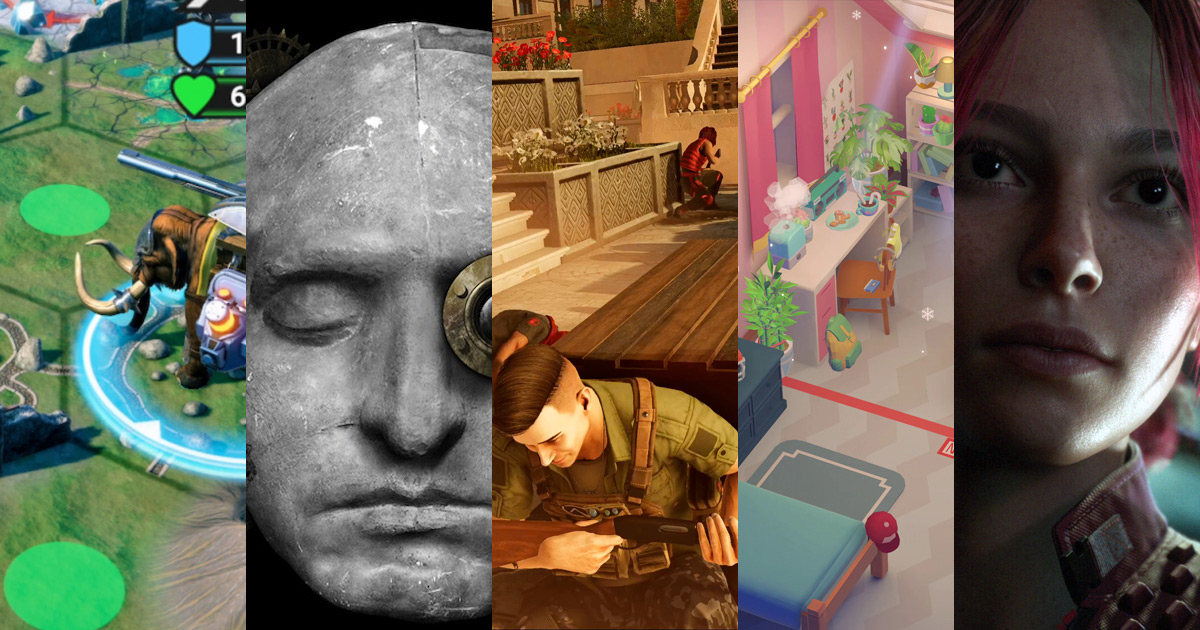How widespread is the migration of mobile developers to Steam?
Is there a shift from mobile to Steam, and if so, what might this phenomenon be attributed to? — The editorial team at App2Top spoke to several teams experienced with both platforms: HeroCraft, Brickworks Games, Lipsar Studio, Kylyk Games, and Nekki.
How widespread is the migration/partial migration of mobile developers to the premium segment on Steam?
Sergey Ulankin — Head of PC — HeroCraft
No statistic can provide an exact answer: many teams change names, launch under different legal entities, and do not publicize their mobile past. However, subjectively, from communication with developers, especially in the indie segment, many have mobile experience. This could be through independent development or work within large mobile studios. Particularly in the Russian-speaking segment of the industry, the mobile sphere has been and remains the main source of personnel and even entire teams that then move on to Steam.
Georgiy Beloglazov — Founder and CEO — Brickworks Games
So far, it's not an exodus but more of a pilgrimage: a few friendly studios from mobile are testing their strengths on the Steam platform, experimenting with very different projects and target audiences. The reason is usually the same — the free-to-play mobile development model has hit its ceiling, and a new global market has not emerged. They apply their skills where the risks seem not as high.
Gleb Durnovo — Co-founder — Lipsar Studio
Honestly, I haven't measured it. From my acquaintances, I can say that many in mobile are looking toward Steam, but not all decide to make the leap.
Kyunnay Vinokurova — Co-founder and Game Designer — Kylyk Games
It seems to me these are isolated cases. In Russia, there are many successful mobile companies that can offer excellent working conditions and good salaries. Transitioning to a new platform often leads to a downgrade in earnings and comfort without any guarantees of success. Thus, it's hard to talk about mass migration.
Dmitry Pimenov — COO and Game Director of SPINE project — Nekki
Talking about the CIS market, the trend is quite noticeable. Five years ago, most large companies I knew started developing projects for consoles/PC. Unfortunately, many did not survive even until the announcement. As for the world market, the situation is different — in my view, the industry histories of the CIS and other countries differ significantly.
What might this phenomenon be connected to (feel free to share from your own experience)?
Sergey Ulankin — Head of PC — HeroCraft
With the overall trend: mobile developers are increasingly looking toward Steam, in both the premium and free-to-play segments. The contrast between the platforms is the reason. On mobile, competition is intense, traffic expensive, organic almost dead, and indie teams have minimal promotional opportunities. Steam offers comparatively lower competition in certain genres, numerous marketing channels beyond paid traffic, and a steady, growing, paying audience. Even free games long successful on mobile, like Summoners War, can attract a new audience and perform well when launched on Steam.
Georgiy Beloglazov — Founder and CEO — Brickworks Games
In our case — the desire to return to roots and create something beautiful. Originally, Sublustrum was intended as a non-commercial project, a music album in the form of a video game. Its remake continues these traditions — only now with a bigger budget and a more experienced and versatile team. Such projects are difficult to fit into mobile pipelines and performance marketing, so we immediately turned our gaze to Steam.
Gleb Durnovo — Co-founder — Lipsar Studio
Developing mobile projects is increasingly like a lottery with "guess the CPI". Even well-designed gameplay projects can perish if CPI and LTV don’t align. Traffic is expensive, competition is vast.
Probably, there are still many in mobile wanting to create games rather than just improve metrics. Thus, they can't help but look toward PCs and consoles.
Kyunnay Vinokurova — Co-founder and Game Designer — Kylyk Games
In our case, the transition from mobile to PC development was driven by the desire to do something different and learn something new after more than 10 years of developing mobile games.
Dmitry Pimenov — COO and Game Director of SPINE project — Nekki
For Nekki, transitioning to consoles and PC was first motivated by the desire to predict the industry's future. When designing SPINE, we believed that cross-platform play and the merging of console and mobile markets were imminent. Consequently, our project was initially intended to be cross-platform.
Ultimately, we found that the industry is not converging on cross-platform as quickly as expected (as a result, we decided to make SPINE a premium game without mobile support).
Speaking about the observed migration, I would highlight these reasons:
- Firstly, many companies found themselves with enough capital about four to six years ago to consider alternative investments (partially due to pandemic revenue boosts).
- Secondly, there was enough accumulated experience and expertise in game design and content production, creating a desire to apply them to something more complex. Many developers are romantics at heart, drawn to the premium segment where they can fully express design prowess (I understand, as I feel the same way), often making the transition well-received within teams.
- Another factor emerged: the mobile project market became increasingly crowded, traffic purchases became less profitable, and launching new free-to-play games became more unpredictable. I believe this led studio heads to seek new niches. The console-premium segment is more predictable in marketing terms and has operated along defined paths for years.
What challenges should teams transitioning from mobile to Steam be prepared for?
Sergey Ulankin — Head of PC — HeroCraft
The main challenge is that Steam operates completely differently. Especially in marketing. The mobile cycle: finish the game, conduct tests, launch globally, and then start active marketing. On Steam, it's the opposite: a year of preparation, active marketing before release, building a community, gathering wishlists, and public development. If you don't do this, the release fails.
Another major difference: Steam is not just a store, but a community platform. Here, users do not just download and pay, but actively discuss the game with others, sharing observations, ideas, and dissatisfaction. Forums, discussions, reviews, and posts are integral to the game's perception. Business decisions directly impact feedback.
Just today, for example, I spoke with a developer whose game is on both mobile and Steam. On mobile, they had a battle pass that couldn't be fulfilled without spending money, and the game thrived! However, on Steam, an eager user calculated the in-game economy and posted about it in discussions, sparking outrage and plummeting ratings — so they had to change the balance on Steam.
Georgiy Beloglazov — Founder and CEO — Brickworks Games
First and foremost — relearning how to work with the community. We are just starting this process, but we already understand that the audience here is much more demanding and, shall we say, principled. The interaction is often based on expectations, which isn't always beneficial for developers or players.
Gleb Durnovo — Co-founder — Lipsar Studio
For PC, you need to create games with engaging gameplay. On Steam, player reviews are crucial. The marketing approach is entirely different: developers focus on enhancing gameplay rather than product metrics and tutorial funnel analytics (analytics on Steam is generally lacking).
Kyunnay Vinokurova — Co-founder and Game Designer — Kylyk Games
Expect a lack of money and resources, especially if transitioning from large mobile companies. In mobile development, budgets are often in the tens or hundreds of millions of dollars, while in PC development, they're in the millions of rubles.
Dmitry Pimenov — COO and Game Director of SPINE project — Nekki
The answer to this question will likely be unique for each team. Of course, there are technical issues. For instance, Unity, a favorite engine among mobile developers, may hinder achieving modern graphics. Switching engines is quite expensive and necessitates retraining and team expansion, which many have faced.
Another issue: in the CIS, there is a pressing shortage of skilled workers. There's a fierce competition for experienced developers, game designers, and content creators.
One cause of this problem is the low level of English in teams, which limits international hiring. Consequently, companies are restricted to local specialists, among whom truly experienced ones are rare, as few large premium games were developed in the CIS before. Moreover, experienced employees often know or learn English and then get recruited by international studios.
You might also face issues like your long-established business contacts becoming obsolete. For example, the Shadow Fight series, which I previously worked on, boasts over 500 million players. However, when meeting console publishers for the first time, they would shrug and admit they'd never heard of our series.
Console segments receive little information from the mobile world. Therefore, even if you have extensive mobile game development experience, console publishers still see you as a new team, requiring you to prove your capabilities at every step.
What questions typically arise first for teams making this transition? Which should be addressed first?
Sergey Ulankin — Head of PC — HeroCraft
Typical inquiries include:
- Which marketing channels are effective in their genre?
- Is their genre/setting/aesthetic even viable on the platform?
These are valid questions. The first step is market research: are there any analogs? How were they marketed? Where is the audience?
For example: if you have a horror game with a gimmick, almost all marketing happens through TikTok. If you're not proficient with TikTok, you either need to learn or rethink your strategy. This saves a lot of time and money.
Georgiy Beloglazov — Founder and CEO — Brickworks Games
The most pertinent question to ask yourself is: where will we acquire the necessary team competencies? Will we gain this experience ourselves by releasing several test games, approach a publisher, or hire specialists with relevant experience? The choice isn't always clear.
Gleb Durnovo — Co-founder — Lipsar Studio
Many need to recall: what it's like to actually make games.
Thus, basic questions often arise: which genre, which setting to choose, how to promote, how to test a hypothesis...
Kyunnay Vinokurova — Co-founder and Game Designer — Kylyk Games
It seems classical to ask where to find money/publishers.
At the beginning, it's likely nowhere. Initially, development runs on pure enthusiasm with no guarantees of results. If the initial outcome is successful, then potentially investors might come forward to fund it.
Dmitry Pimenov — COO and Game Director of SPINE project — Nekki
I think the most frequent questions are:
- Why are we doing this?
- How will we ensure success in a new market where many companies have existed for decades?
The first question's answer is personal, but for the second, I recommend finding a good niche that matches your accumulated skills (for Nekki, for instance, it was animation), and strive to genuinely create a quality game in it, enlisting experts, conducting honest playtests and reviews, and not ignoring problems and the truth (lest you end up like The Day Before).
Do game teams that previously launched mobile games find what they're seeking on Steam?
Sergey Ulankin — Head of PC — HeroCraft
If they're seeking an audience and funds — yes. If they're creating good games and know how to promote them — they definitely find it. If not — no. It's quite simple.
Georgiy Beloglazov — Founder and CEO — Brickworks Games
First, it's important to understand what they're searching for. Profit, especially "X times return," is not always found.
Gleb Durnovo — Co-founder — Lipsar Studio
I believe those truly looking will eventually find it. However, success on the new platform likely doesn't come with their first try.
Kyunnay Vinokurova — Co-founder and Game Designer — Kylyk Games
For us, yes, we found what we were looking for. We wanted to create a game that we personally would enjoy.
In mobile development, you're driven by numbers and copying successful solutions, which isn’t inherently bad; that's business and industry.
On PC, you lean more towards your own feelings, creating what you like rather than what has the best metrics. However, it's important not to go to extremes: player opinion must also be considered, as we make games not just for ourselves but for them too.
Dmitry Pimenov — COO and Game Director of SPINE project — Nekki
It seems so. From my observations, those who reach release continue to develop this direction in their studios. The premium segment is straightforward — design and create a good game, receive good scores.
Do such teams find money in this market? Both yes and no. On one hand, much more can be earned in free-to-play, but on the other, the chances of success are less predictable.
In the premium segment, it's hard to find immense profit. However, it appears to be a stable niche where long-term efforts — releasing new games, growing the team, creating a brand — pay off. Years go by, but people still want to play premium games where playtime is finite, and the developer endeavors to evoke a specific emotion. Such games are continually needed, every month.
Is there enough room on Steam for all these teams and their games?
Sergey Ulankin — Head of PC — HeroCraft
An interesting dynamic is emerging. More games are achieving over 1,000 reviews — a sign of commercial viability. However, fewer are surpassing 10,000 — a hallmark of a hit. Thus, the market is shifting toward a "strong middle": fewer mega-hits, more stable games capable of sustaining small teams. It's not a path to millions, but a path to sustainability. And there are still many niches like this.
Georgiy Beloglazov — Founder and CEO — Brickworks Games
We haven't conducted such analysis. Plus, it wouldn’t have influenced our decision to develop Sublustrum. It's important to understand that we didn't choose which game to develop for a specific platform; we decided which platform would best suit our project. In general, teams with mobile development experience may now consider the non-gaming app market.
Gleb Durnovo — Co-founder — Lipsar Studio
There's never enough room for everyone in the game market. However, talented and patient individuals, as well as those who can find investments and improve their games from project to project, have a good shot. The key is not to expect quick success and millions.
Kyunnay Vinokurova — Co-founder and Game Designer — Kylyk Games
Of course, there is. Now is actually a golden time for creating games. Access to tools, an audience, distribution platforms, and answers to all questions are just a few clicks away.
Dmitry Pimenov — COO and Game Director of SPINE project — Nekki
There is definitely enough room. Game buyers constantly need new games. But now a new issue is taking center stage — the problem of visibility. According to recent data, about 50 new games are released on Steam daily. Yes, many are shovelware projects, yet top games often lack high production value, but they deliver impressive and distinct emotions. This means your multimillion-dollar project will compete with indie hits like Peak and Schedule I for attention. In these conditions, you must tread carefully with your project's scope. The riskier your expensive idea, despite its brilliance, the more cautious you must be. For AAA publishers, this often means adopting a "vanilla" approach in design to appeal to many at once and recover costs. For indie developers lacking marketing budgets, standing out is increasingly challenging. For gamers, however, the abundance of games is a major plus: there’s always a fresh game in the top worthy of attention.





